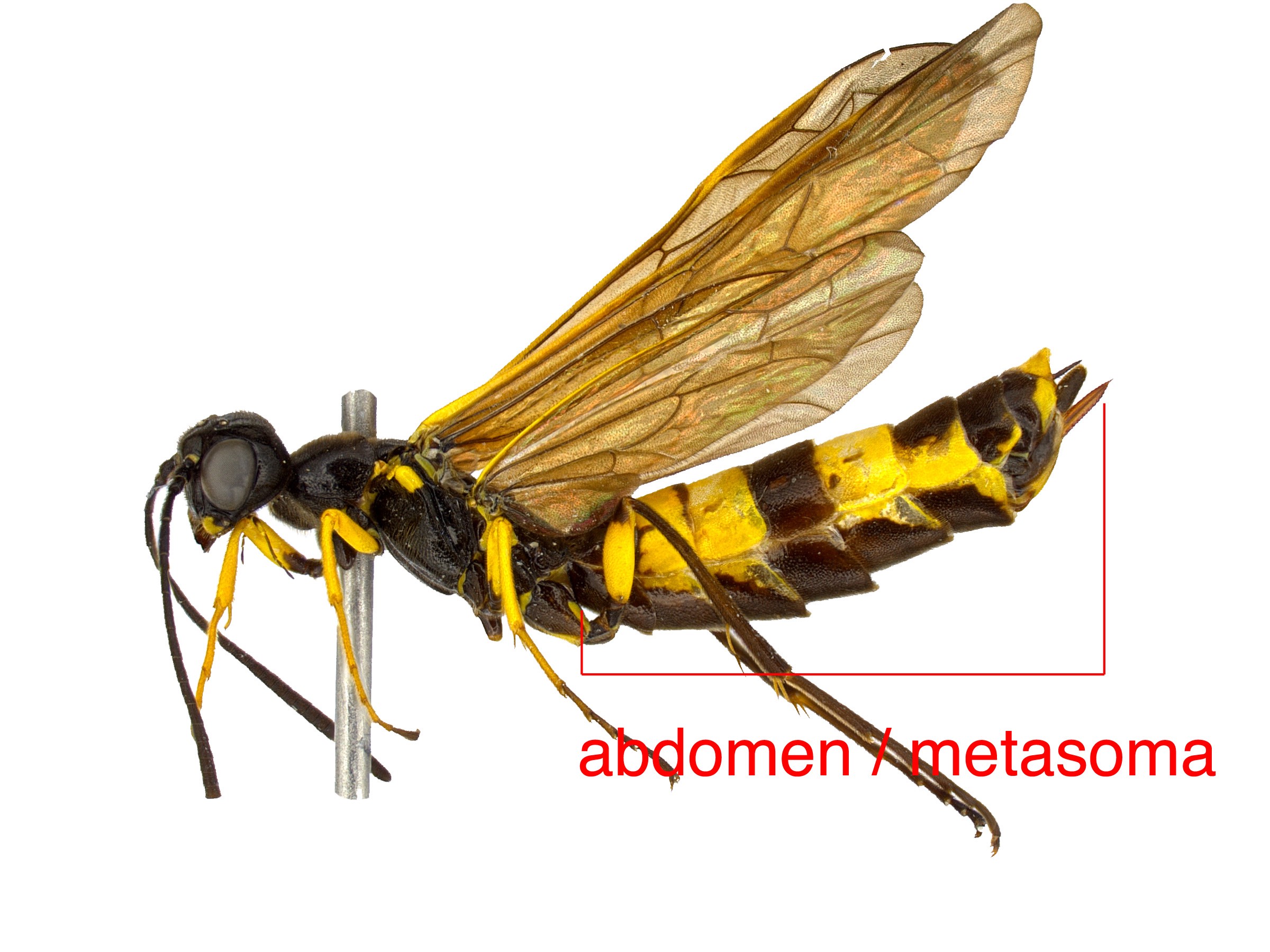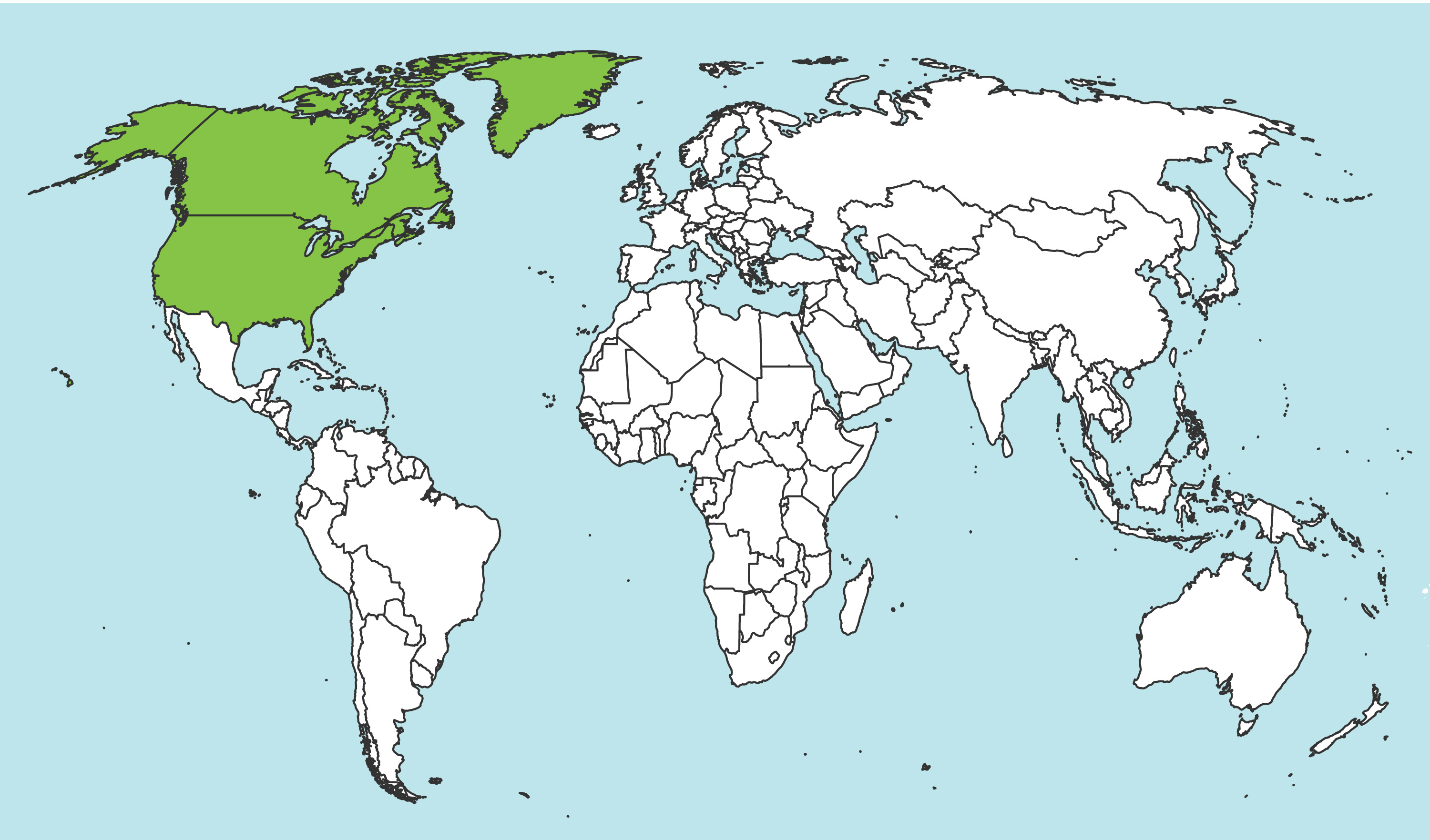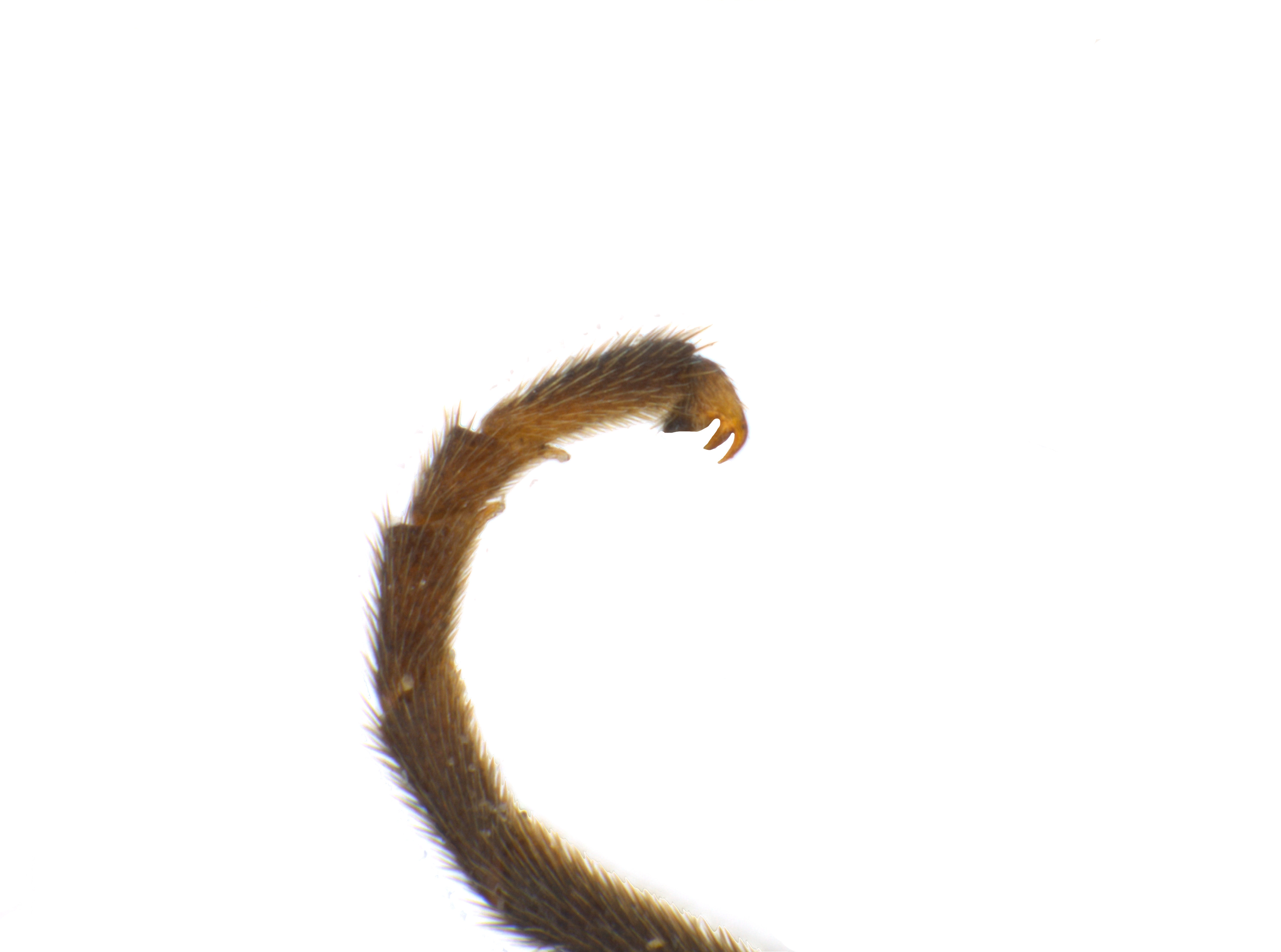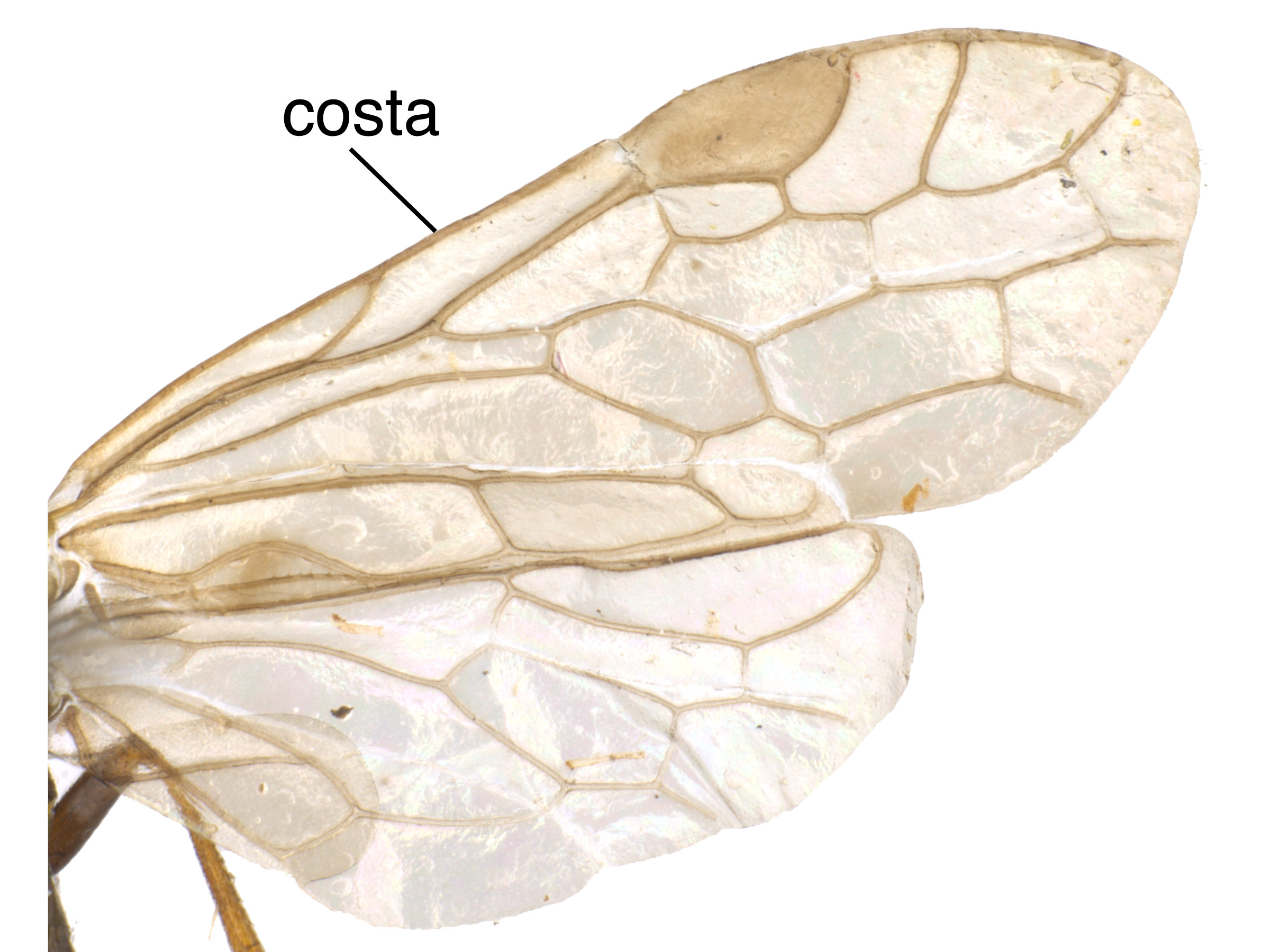Family: Tenthredinidae
Family common name: common sawflies
Subfamily: Allantinae
Tribe: Empriini
Genus: Ametastegia Costa, 1882
Subgenera: Ametastegia, Protemphytus
The Tenthredinidae are the most species-rich family and are found throughout the world, in all continents but Antarctica. They are known as the “common sawflies.” They can generally be recognized by a cylindrical body and long, segmented antennaeantenna:
the sensory organ emerging from the front of the head, usually between the compound eyes and above the clypeus; includes the flagellum, scape and pedicel
 . Otherwise, they come in a variety of colors, sizes, and forms (Goulet 1992Goulet 1992:
. Otherwise, they come in a variety of colors, sizes, and forms (Goulet 1992Goulet 1992:
Goulet H. 1992. The genera and subgenera of the sawflies of Canada and Alaska: Hymenoptera. Symphyta. The insects and arachnids of Canada. Part 20. Agriculture Canada Publication.).
Sawflies in the Allantinae subfamily are mostly black and shining, sometimes with other colors. They have agricultural importance as some species are pests on cultivated and ornamental plants (Smith 1979aSmith 1979a:
Smith DR. 1979a. Nearctic sawflies. IV. Allantinae: Adults and larvae (Hymenoptera: Tenthredinidae). Technical Bulletin, U.S. Department of Agriculture 1595: 1-172.). They can be distinguished from other subfamilies by wing venationvenation:
the network of veins on a wing
(Smith 2003aSmith 2003a:
Smith DR. 2003a. A Synopsis of the sawflies (Hymenoptera: Symphyta) of America south of the United States: Tenthredinidae (Allantinae). Journal of Hymenoptera Research 12 (1): 148-192.).
Ametastegia are small to medium-sized, about 5–8 mm in length. They are mostly black in color, sometimes with orange or lightly-colored sclerites on the thoraxthorax:
the second and middle segment of the body, between the head and abdomen
 and abdomenabdomen:
and abdomenabdomen:
the third and last segment of an insect's body; in sawflies this is usually made up of 11 segments (segments 9 and 10 often fused) (Khayrandish et al. 2015Khayrandish et al. 2015:
(Khayrandish et al. 2015Khayrandish et al. 2015:
Khayrandish M, Talebi AA, Blank SM, and Fathipour Y. 2015. Study on the genus Ametastegia Costa (Hymenoptera: Tenthredinidae: Allantinae) in northern Iran, with the description of a new species. Journal of Insect Biodiversity and Systematics 1 (1): 17-32.).
There are 56 described extantextant:
in existence; opposite of extinct
species worldwide. Sixteen occur in North America (Smith 2003aSmith 2003a:
Smith DR. 2003a. A Synopsis of the sawflies (Hymenoptera: Symphyta) of America south of the United States: Tenthredinidae (Allantinae). Journal of Hymenoptera Research 12 (1): 148-192., Taeger et al. 2010Taeger et al. 2010:
Taeger A, Blank SM, and Liston AD. 2010. World Catalog of Symphyta (Hymenoptera). Zootaxa 2580: 1-1064.).
A NearcticNearctic:
describing the region of the Northern Hemisphere that includes North America south through northern Mexico
 key to species is included in Smith 1979aSmith 1979a:
key to species is included in Smith 1979aSmith 1979a:
Smith DR. 1979a. Nearctic sawflies. IV. Allantinae: Adults and larvae (Hymenoptera: Tenthredinidae). Technical Bulletin, U.S. Department of Agriculture 1595: 1-172..
Subfamily characters
 vein M and 1m-cu parallel (Smith 1979aSmith 1979a:
vein M and 1m-cu parallel (Smith 1979aSmith 1979a: vein 2A+3A complete, connected to 1A by crossveincrossvein:
vein 2A+3A complete, connected to 1A by crossveincrossvein:Genus characters
 (Smith 1979aSmith 1979a:
(Smith 1979aSmith 1979a: shallowly notched (Smith 1979aSmith 1979a:
shallowly notched (Smith 1979aSmith 1979a: 1A (Smith 1979aSmith 1979a:
1A (Smith 1979aSmith 1979a: vein 2r present (Smith 1979aSmith 1979a:
vein 2r present (Smith 1979aSmith 1979a: vein M intersecting Sc+R at the intersection of Sc+R and Rs+M (Smith 1979aSmith 1979a:
vein M intersecting Sc+R at the intersection of Sc+R and Rs+M (Smith 1979aSmith 1979a: with indistinct basalbasal:
with indistinct basalbasal:Ametastegia can be confused with similar species in the subfamily Allantinae or tribe Empriini. It can be distinguished by the perpendicular anal crossveinanal crossvein:
a crossvein that goes through the center of the basal anal cell
, the shallowly notched clypeusclypeus:
sclerotized area on the front of the head located between the antennal insertions and labrum
 , and the lack of hind winghind wing:
, and the lack of hind winghind wing:
the posterior wing of each pair of wings
 cellcell:
cellcell:
1. a membranous area of the wing between veins, 2. a small cavity or closed space
 M (Smith 1979aSmith 1979a:
M (Smith 1979aSmith 1979a:
Smith DR. 1979a. Nearctic sawflies. IV. Allantinae: Adults and larvae (Hymenoptera: Tenthredinidae). Technical Bulletin, U.S. Department of Agriculture 1595: 1-172.).
none
In North America, Ametastegia feeds on Rumex crispus (curly dock), other Rumex (dock), Polygonum erectum (upright knotweed), other Polygonum (knotweed), Viola (violet, pansy), and Salix (willow) (Smith 1979aSmith 1979a:
Smith DR. 1979a. Nearctic sawflies. IV. Allantinae: Adults and larvae (Hymenoptera: Tenthredinidae). Technical Bulletin, U.S. Department of Agriculture 1595: 1-172., Smith 2003aSmith 2003a:
Smith DR. 2003a. A Synopsis of the sawflies (Hymenoptera: Symphyta) of America south of the United States: Tenthredinidae (Allantinae). Journal of Hymenoptera Research 12 (1): 148-192.).
The female Ametastegia lays eggs on the underside of a leaf along a veinvein:
a tube-like, often darkened, structure on the wings
 (Carrillo et al. 1990Carrillo et al. 1990:
(Carrillo et al. 1990Carrillo et al. 1990:
Carrillo R, Mundaca N, and Cisternas E. 1990. Ametastegia glabrata (Fallen) especie fitoacute;faga introducida a Chile (Hymenoptera: Tenthredinidae). Revista Chilena de Entomologia 18: 5-7.). LarvaeLarva:
the immature stage of holometabolous insects
 of A. glabrata are light green dorsally with pale longitudinal stripes (Malipatil et al. 1995Malipatil et al. 1995:
of A. glabrata are light green dorsally with pale longitudinal stripes (Malipatil et al. 1995Malipatil et al. 1995:
Malipatil MB, Naumann ID, and Williams DG. 1995. First record of dock sawfly Ametastegia glabrata (Fallen) in Australia (Hymenoptera: Tenthredinidae). Journal of the Australian Entomological Society 34: 95-96.). LarvaeLarva:
the immature stage of holometabolous insects
 of other species are less well-known. The young larvaelarva:
of other species are less well-known. The young larvaelarva:
the immature stage of holometabolous insects
 feed singly on the underside of the leaf, leaving a series of large circular holes (Carrillo et al. 1990Carrillo et al. 1990:
feed singly on the underside of the leaf, leaving a series of large circular holes (Carrillo et al. 1990Carrillo et al. 1990:
Carrillo R, Mundaca N, and Cisternas E. 1990. Ametastegia glabrata (Fallen) especie fitoacute;faga introducida a Chile (Hymenoptera: Tenthredinidae). Revista Chilena de Entomologia 18: 5-7.). At maturity the prepupae search for a desired plant medium in which to burrow and create a cellcell:
1. a membranous area of the wing between veins, 2. a small cavity or closed space
 . This can be a fruit, a stem, the pith of a berry cane, a corn stalk, decaying wood, or even tree bark. Often the plant used for creating the pupal cellcell:
. This can be a fruit, a stem, the pith of a berry cane, a corn stalk, decaying wood, or even tree bark. Often the plant used for creating the pupal cellcell:
1. a membranous area of the wing between veins, 2. a small cavity or closed space
 is not the larval host and as such is considered a secondary host. Many species are bi- or multivoltinemultivoltine:
is not the larval host and as such is considered a secondary host. Many species are bi- or multivoltinemultivoltine:
describing a life cycle with many generations per calendar year
(Smith 1979aSmith 1979a:
Smith DR. 1979a. Nearctic sawflies. IV. Allantinae: Adults and larvae (Hymenoptera: Tenthredinidae). Technical Bulletin, U.S. Department of Agriculture 1595: 1-172., Malipatil et al. 1995Malipatil et al. 1995:
Malipatil MB, Naumann ID, and Williams DG. 1995. First record of dock sawfly Ametastegia glabrata (Fallen) in Australia (Hymenoptera: Tenthredinidae). Journal of the Australian Entomological Society 34: 95-96.).
Though the larvaelarva:
the immature stage of holometabolous insects
 do not feed on fruit, the prepupae of A. glabrata, known as the dock false-worm (Malipatil et al. 1995Malipatil et al. 1995:
do not feed on fruit, the prepupae of A. glabrata, known as the dock false-worm (Malipatil et al. 1995Malipatil et al. 1995:
Malipatil MB, Naumann ID, and Williams DG. 1995. First record of dock sawfly Ametastegia glabrata (Fallen) in Australia (Hymenoptera: Tenthredinidae). Journal of the Australian Entomological Society 34: 95-96.), is recorded using apples as a secondary host to pupate. The damage inflicted on the apple is sufficient to give this species pest status (Newcomer 1916Newcomer 1916:
Newcomer EJ. 1916. The dock false-worm: an apple pest (No. 265). US Department of Agriculture., Smith 1979aSmith 1979a:
Smith DR. 1979a. Nearctic sawflies. IV. Allantinae: Adults and larvae (Hymenoptera: Tenthredinidae). Technical Bulletin, U.S. Department of Agriculture 1595: 1-172.). In other locations outside of North America, the damage inflicted by A. glabrata on raspberry canes and grape vine is also significant (Carrillo et al. 1990Carrillo et al. 1990:
Carrillo R, Mundaca N, and Cisternas E. 1990. Ametastegia glabrata (Fallen) especie fitoacute;faga introducida a Chile (Hymenoptera: Tenthredinidae). Revista Chilena de Entomologia 18: 5-7., Malipatil et al. 1995Malipatil et al. 1995:
Malipatil MB, Naumann ID, and Williams DG. 1995. First record of dock sawfly Ametastegia glabrata (Fallen) in Australia (Hymenoptera: Tenthredinidae). Journal of the Australian Entomological Society 34: 95-96., Khayrandish et al. 2015Khayrandish et al. 2015:
Khayrandish M, Talebi AA, Blank SM, and Fathipour Y. 2015. Study on the genus Ametastegia Costa (Hymenoptera: Tenthredinidae: Allantinae) in northern Iran, with the description of a new species. Journal of Insect Biodiversity and Systematics 1 (1): 17-32.).
World: This genus is known from North America, central and southern Europe east to Siberia, including Iceland, and in western Asia including Iran (Smith 1979aSmith 1979a:
Smith DR. 1979a. Nearctic sawflies. IV. Allantinae: Adults and larvae (Hymenoptera: Tenthredinidae). Technical Bulletin, U.S. Department of Agriculture 1595: 1-172., Khayrandish et al. 2015Khayrandish et al. 2015:
Khayrandish M, Talebi AA, Blank SM, and Fathipour Y. 2015. Study on the genus Ametastegia Costa (Hymenoptera: Tenthredinidae: Allantinae) in northern Iran, with the description of a new species. Journal of Insect Biodiversity and Systematics 1 (1): 17-32.). Ametastegia glabrata has been introduced to Chile, discovered in 1987 (Carrillo et al. 1990Carrillo et al. 1990:
Carrillo R, Mundaca N, and Cisternas E. 1990. Ametastegia glabrata (Fallen) especie fitoacute;faga introducida a Chile (Hymenoptera: Tenthredinidae). Revista Chilena de Entomologia 18: 5-7.), and to Australia, discovered in 1993 (Malipatil et al. 1995Malipatil et al. 1995:
Malipatil MB, Naumann ID, and Williams DG. 1995. First record of dock sawfly Ametastegia glabrata (Fallen) in Australia (Hymenoptera: Tenthredinidae). Journal of the Australian Entomological Society 34: 95-96.).
North America: Ametastegia is widespread and recorded throughout North America, as far north as Alaska and the Yukon Territory, and in Mexico and Central America, as far south as Costacosta:
the robust vein on the anterior margin of the wing; vein C
 Rica (Smith 1979aSmith 1979a:
Rica (Smith 1979aSmith 1979a:
Smith DR. 1979a. Nearctic sawflies. IV. Allantinae: Adults and larvae (Hymenoptera: Tenthredinidae). Technical Bulletin, U.S. Department of Agriculture 1595: 1-172., Smith 2003aSmith 2003a:
Smith DR. 2003a. A Synopsis of the sawflies (Hymenoptera: Symphyta) of America south of the United States: Tenthredinidae (Allantinae). Journal of Hymenoptera Research 12 (1): 148-192.). A few larval specimens have been collected in Greenland (Vilhelmsen 2015Vilhelmsen 2015:
Vilhelmsen L. 2015. 11.2. Tenthredinidae (Tenthredinoidea) (True sawflies). In: Bouml;cher J, Kristensen NP, Pape T, and Vilhelmsen L, eds. The Greenland Entomofauna - An identification manual of insects, spiders and their allies. Koininklijke Brill NV.).
Map data from: GBIF.org (29 October 2019) GBIF Occurrence Download Ametastegia
Details about data used for maps can be found here.